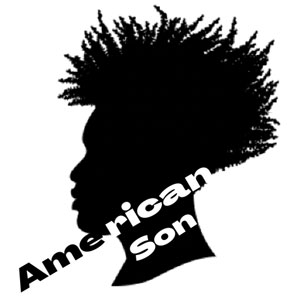
 [rating=3]How can you celebrate the lives of young people when so many die for no good reason? Jamal has everything going for him: high school graduation and a West Point education in the coming fall, a Lexus to drive, good friends to hang with, and doting parents who have given him every advantage. He’s a good son. But one night, he doesn’t come home to his family. What has happened to him?
[rating=3]How can you celebrate the lives of young people when so many die for no good reason? Jamal has everything going for him: high school graduation and a West Point education in the coming fall, a Lexus to drive, good friends to hang with, and doting parents who have given him every advantage. He’s a good son. But one night, he doesn’t come home to his family. What has happened to him?
“American Son” by Christopher Demos-Brown points up the agonies that many African American parents go through when their young sons come of age. It is an emotional account of a family’s experiences with the law enforcement system in the South. This four-character drama brings out many core issues concerning race and class today, especially regarding how black teenage men are treated at the hands of the police. Fleetwood-Jordain’s production, directed by Tim Rhoze, is excellently performed and tells a meaningful tale.
The best part of the show is the wonderful acting by Alexandria Moorman, who excels in her role as Kendra Ellis-Connor, an anxious and frustrated (black) mother, worried about her teenage son who has suddenly gone missing. When the show opens, we find her at the police station in Coral Gables, Florida, asking whoever will listen, “What has happened to my son?” According to her, Jamal is very well-behaved, and how dare the police imply that he could be a criminal or might be having a secret tryst with a young woman! We see how Kendra’s frustration mounts as time passes, and she basically gets the runaround from Officer Paul Larkin (Michael Manocchio), the duty officer on-call. The officer insists that he is following correct “police procedure” in asking her all sorts of questions while, simultaneously, not releasing much information. However, he eventually shares the fact that the license plate to her son’s car has been listed on the police department’s computer during the a.m. watch.
It is later when Kendra’s estranged husband Scott Connor (Martin Andrews) shows up at the police station that they receive more information about Jamal’s car. Scott, it seems, is initially mistaken for another cop, since he wears a badge. (He works for the FBI.) So when Officer Larkin thinks he’s part of the police investigation of the incident, he briefs Scott confidentially about the case. In the back of the audience’s mind, however, is that we surmise that the husband gets more information than his wife does because he is white and she is black. Then there is also the issue of “professional courtesy” among law enforcement officers. Teasing all of this out is very intriguing and gets the audience thinking.
We see continually see arguments ensue between the disaffected parents as they await further news about their missing son. Their explosive confrontations often hinge on how each of them has internalized different perspectives having to do with race and race relations in the contemporary United States. To put this another way, we see how the filter of race has influenced their perspectives on the current situation—and how blindsided they often are to the other’s viewpoint. For example, Scott has no qualms using his race to make inroads with the (white) officer Larkin, while Kendra has a real problem with this. We then see how the “friendly” interaction between these two white men parallels the later frank discussion between Kendra and the black detective Lieutenant John Stokes (Darren Jones). That is when the lieutenant makes clear to her that he is no Uncle Tom but, rather, experienced in the ways of the world. The key is not to provoke any police officer—of any race—into some type of reaction or overreaction that might lead to ill-fated consequences. That being said, an offensive bumper sticker on Jamal’s Lexus may have very well given the police an excuse to follow or stop his car on the night of the incident.
Jamal’s parents are a biracial couple and middle-class, and there’s something admirable about both of them wanting to shield Jamal from the reality of white racism while he was growing up. So, for instance, when they saw their child in the third grade not being called on in public school, they had the financial resources to put him in private school. While it is understandable that the parents want to protect their child for as long as possible, it is this setup which exposes the deficiencies in the script.
For example, one troublesome aspect is that Scott seems clueless about the implications of having raised a young black man. One would think that since he is married to an African American woman, he would have learned about the potential dangers of “growing up black” at a much earlier point in their marriage and that this topic wouldn’t have had wait until the two of them are drawn together at the police station. He should have already known that his son might be considered a target by certain officers, especially considering all of the unfathomable killings of other such men, captured on cell phone video in recent years.
Also unlikely is when Kendra chooses to do nothing about the provocative and angry bumper sticker on her son’s car after she has seen it for herself. We know that she’s no wallflower and is savvy to boot, so why not demand that her son remove the sticker immediately before he might get into trouble—or remove it herself? Of course, she is right that nobody should have to die or become seriously injured as result of exercising their “free speech” rights. But why tempt fate? Above all, why does Kendra have to wait for the lieutenant to tell her that this sticker might have had some bearing on why Jamal’s car was pulled over in the first place? She should have known this already and should not have had to make excuses for her son’s behavior or her own failings as a parent.
Finally, having “the talk” with Jamal about not drawing needless attention to himself in a racially prejudiced society should have already happened well before this incident, considering that Scott is in law enforcement himself and that Kendra has a Ph.D. in psychology. They are not ignorant or naïve people or unaware of the society around them; far from it.
I really liked the graffiti art murals that take up the entire back wall of the set, consisting of a series of painted portraits of crying (black) women. They are beautiful, lovingly whimsical, and sad: a credit to the artistry of Sholo Beverly. However, this portion of the set is much too disconnected from the locus of the action, namely, a private office at the Coral Gables police station. Not only does the audience have to imagine the office setting, but the existing props do not add to its credibility. The two gray chairs in the center of the stage are just a little too large and comfortable looking and are angled at 90 degrees angle, making it look as if a TV interview was going to take place; plus the two side chairs seem more suited to a hotel lobby. There should have been molded plastic chairs and steel and glass partitions that would befit an institutional setting. We need glass doors that open and close, so that the characters do not simply waltz onto the set from stage left. The cold fluorescent lighting does help—thanks to the work of lighting designer David Goodman-Edberg—but the creation of a more realistic set with attendant props would have added to Kendra and Scott’s angst. Peter Clare’s sound design is good, and the sound of water presumably drums up the idea of tears.
“American Son” is a story about an appalling reality that we face every day in our society. We can all learn a lot from this performance, no matter what our race, ethnicity, or background may be. Although not entirely successful, the script points out how racism, racial profiling, and threats of violence place people in every community—especially our young people—at grave risk.
“American Son” is playing through November 13, 2022, at the Fleetwood-Jourdain Theatre, Noyes Cultural Arts Center, 927 Noyes Street, in Evanston.
General admission tickets are: $30.
 There are only four performances remaining, which take place on:
There are only four performances remaining, which take place on:
Saturday, November 5th at 7:00 p.m.
Sunday, November 6th at 3:00 p.m.
Saturday, November 12th at 7:00 p.m.
Sunday, November 13th at 3:00 p.m.
For more information about the show, please go to: https://www.cityofevanston.org/about-evanston/arts-and-culture/theatre/fleetwood-jourdain-theatre.
To purchase tickets, visit: https://apps.cityofevanston.org/webtrac/wbwsc/webtrac.wsc/search.html?module=PST&display=detail&keyword=FJT
COVID requirements are still in effect. You will be asked to wear a mask inside the theatre.
To see what others are saying, visit www.theatreinchicago.com, go to Review Round-Up and click at “American Son”.






More Stories
“No Such Thing”
“Dead Man’s Cell Phone”
“the distrikt of lake michigun”